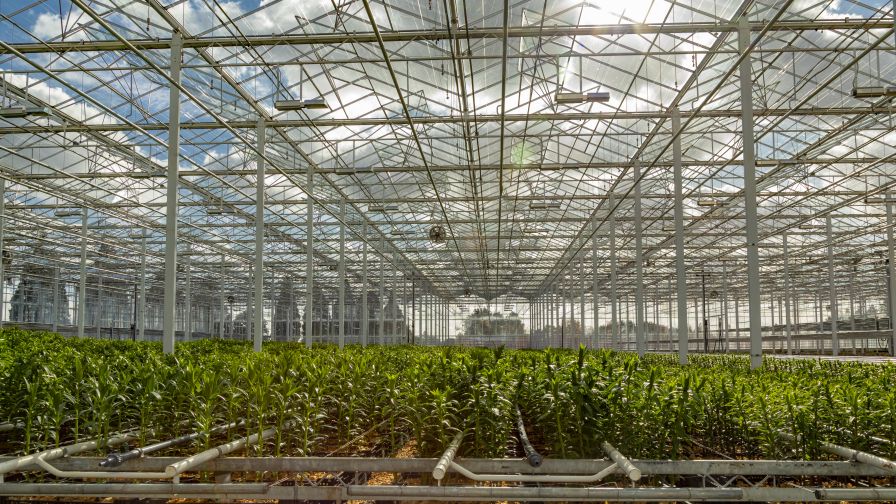How to Reassess Your Property Values to Account for Inflation

Photo: Hortica
Rising inflation has affected greenhouse growers across the industry. As a business owner, it’s important to understand how inflation can affect your property values and insurance coverages. The risk of being underinsured can leave you vulnerable in the event of damage or loss.
To keep your structures protected, here are some tips to make sure your property values — and insurance — have kept pace with economic changes.
Why Reassessing Your Property Values Matters
When you rely on outdated values, you may underestimate the actual cost it takes to rebuild facilities after significant damage.
Discrepancies between outdated valuations and real-world costs can translate to coverage gaps. Inflation, over time, can compound the problem. The result could leave your business financially responsible for the uncovered amount.
A timely property checkup can help you ensure your insurance accurately reflects your property’s inflation-adjusted value.
Top Reasons for Reassessment
Today’s inflation has put a greater spotlight on property assessments. However, a regular reassessment is often a good practice for several reasons. Here are a few factors to consider:
- Added technology and infrastructure. Advances and upgrades to equipment, irrigation systems, or automated processes can enhance the overall value of your property. A reassessment can help capture these improvements to your greenhouse. That way, you can have greater confidence that your valuation, and insurance, aligns with the cost to repair or replace any new additions to your business.
- Persistent supply chain issues. Supply shortages are continuing to drive up material costs, leading to a surge in rebuilding expenses. In many cases, the final replacement expenses may surpass the initial estimates made before the shortages occurred.
- Increasing weather severity. The frequency and intensity of extreme weather events such as floods, hurricanes, hailstorms, winter storms, and fires pose significant risks to greenhouse structures. In 2023, the U.S. experienced 28 weather events that exceeded $1 billion in costs according to the NOAA. As storms become more frequent, and severe, the need for adequate financial protection is critical.
How to Reassess Your Property Values
We’ve covered why reassessing your property and insurance is a good idea. But next comes the question: How do you get started? Here are a few tips:
- Understand the difference between Actual Cash Value (ACV) and Replacement Cost Value (RCV). When selecting property insurance, you’ll come across two primary value types: Actual Cash Value and Replacement Cost Value. Understanding their difference is important:
- Actual Cash Value (ACV): Pays only the depreciated value of damaged or destroyed property at the time of loss. This doesn’t account for increased replacement costs due to inflation.
ACV policies often have lower premiums but can leave policyholders underinsured if they experience a major loss. Paying more upfront for RCV can help you ensure your assets remain adequately protected as markets fluctuate.
- Replacement Cost Value (RCV): Pays to rebuild an equivalent structure or replace belongings at current restoration and market prices. This factors in the real-world expense of rebuilding your property.
The type of valuation your business has will depend on your policy. Take time to review which value type you currently have. Opting for RCV is often a good choice for helping safeguard your business against uncertainties down the road.
- Schedule a property replacement value appraisal.
In most cases, the replacement cost of your greenhouse structures will differ from the market value. Put simpler: the price to replace your damaged property (replacement cost) likely isn’t the same price you’d get from selling your property or business (market value).
Replacement valuations account for the added cost of materials, attached equipment, labor and contractor fees, and the additional expenses that come with repairs.
The best way to account for these fluctuating factors is to schedule a regular replacement value appraisal. Regular appraisals can help keep your insurance policy up to date, reflecting changes in replacement and property values over time.
It’s one step that can make a big difference in protecting your business financially.
Work With Your Insurance Agent
Your insurer will have resources to help you determine accurate replacement costs of your buildings and greenhouses. They can:
- Provide industry-specific guidance: Insurance agents have an understanding of construction materials, changes in building codes, and local market trends. They use this knowledge to give more precise valuations, ensuring your coverage accurately reflects the replacement costs for your property, including buildings and greenhouses.
- Assist with risk mitigation: A thorough reassessment can uncover potential risks on your property that might affect future claims. Your insurance agent can help pinpoint these vulnerabilities, offering suggestions for preventive measures or coverage adjustments to help minimize potential property damage costs.
Greenhouses are the cornerstone of the controlled-environment industry. They shelter your crops, grow your products, and allow you to have year-round production.
Don’t risk underinsuring your greatest investment. Collaborate with your insurer and make sure your structures are insured to value. A comprehensive reassessment today could save you large, unexpected costs in the long run.
In the meantime, connect with your local experts for advice specific to your business. If you have any questions related to insurance or the reassessment process, please reach out. I’d be happy to help.









